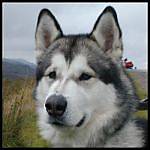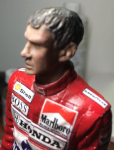
Quoted Text
All right folks here is a brain teaser for you.
Obviously it is an overturned Fokker D.VII.
1. What German manufacturer?
2. What serial range?
3. What Jasta was it from?
4. Who was the pilot?
5. Did he survive?
6. What caused his crash?
7. What was the date?
8. What Army Captured him and was responsible for bringing him down.

Time: October 3, 1918
Place: Montfoucon, 2½ miles behind Allied lines
German pilot: UntOff. Hans Heinrich Marwede:
Hans Heinrich Marwede was a former Kest pilot who was assigned to Jasta 67 in June 1918. Between then and 3rd October he accounted for the DH9 of Goodale and four observation balloons. He was captured after his fifth victory on 3rd October when his D VII was hit by ground fire from the American 6th Balloon Company. The whole episode was recorded on film by a US Signal Corps photographer. Marwede ended up under American guard, bruised and dejected. He later rose to the high rank in the Luft-waffe, but Marwede lost his life in a flying accident before World War 2.
Ground troops: American 6th Balloon Company:
This Fokker D VII was allegedly one of six brought down by machine gunners attached to the 6th US Balloon Company in 1918.
Plane: Fokker D VII 4092/18 (OAW) was destroyed
Story:
"According to Jon Guttman's book "Balloon-Busting Aces of WWI,". Jasta 67 launched an all-out attack on the French balloon line between Clermont and Verdun on 14 September. Ltn d R Christiansen was credited with a balloon at 1630 hrs, but in fact the 57e Compagnie balloon he attacked did not flame. At the same time Marwede attacked the 25e Compagnie balloon and destroyed it. Then he flew on to burn another from the 30e Compagnie at 1634 hrs, and a third from the 31e Compagnie four minutes later.
Unfortunately, not much is known about the markings of Marwede's OAW-built Fokker D.VII, or those of Jasta 67 in general. There are several good photos of Marwede's Fokker D.VII (OAW) 4092/18 overturned and in American hands; however, the hundreds of Yanks who swarmed to the spot had already stripped off much of the fuselage fabric by the time the photos were taken. By the way, there is also some incredible motion picture footage taken of Marwede's Fokker spinning down, and Marwede himself sitting dejected amidst his Yank captors.
The intact fabric undeneath the tailplane shows only the factory finish lozenge fabric. The side cowling panels were apparently painted a dark (unknown) color, while the radiator shell area and cowling around the propeller shaft was painted white. The 'polka dot' pattern seen on the upper cowling panel was actually the OAW factory camouflage pattern in green and mauve.
Marwede was lightly grazed by a bullet on his cheek during his attack on 3 October, before he was brought down by American AA fire. His bloodied face is visible in the photos taken just after his capture:
Of course, we could get into a discussion about the correct 'rules of engagement' and proper military action when it came to balloon observers hanging in their parachutes. As they were combatants, coming down within their own territory, many officers on both sides thought it was perfectly acceptable to go after them as well as the gasbags; after all, trained observers were harder to replace than the balloons. I recall some story told by a British fighter pilot (Taffy Jones, I think) in which a high-ranking officer specifically told his pilots to shoot the observers.
This controversial topic of shooting parachuting observers also formed the subject for scenes in the BBC TV series 'Wings' and in the old classic Frederic March movie 'The Eagle and the Hawk'.
Greg VanWyngarden"











































